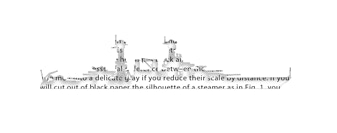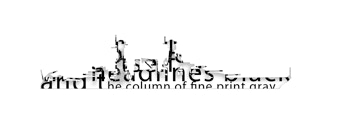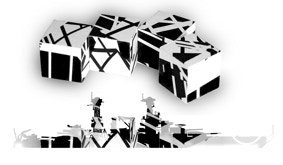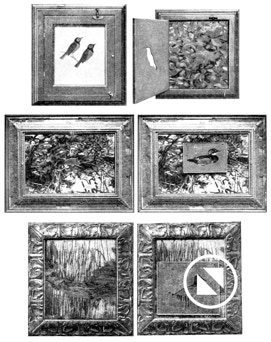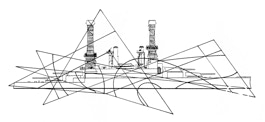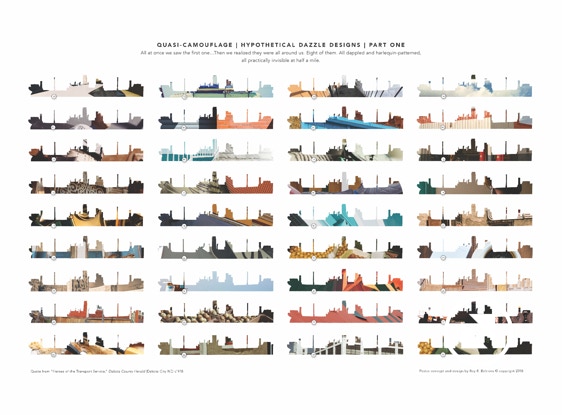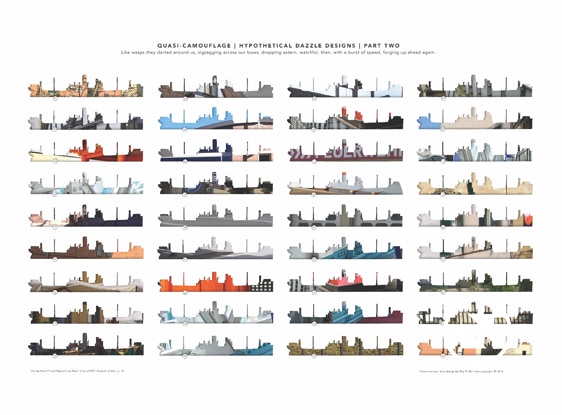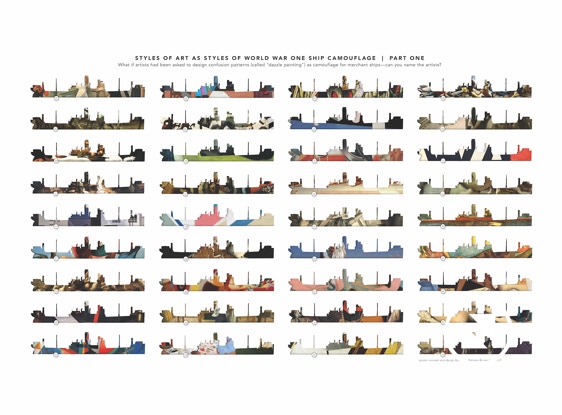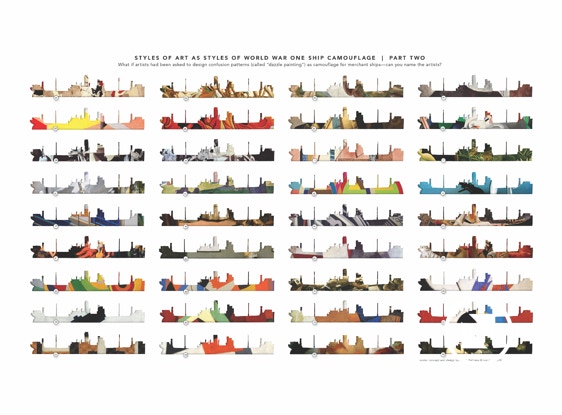Hypothetical
Dazzle
Camouflage
Disruptive Camouflage
Schemes Devised
Using Cut-Out Silhouettes
designed by
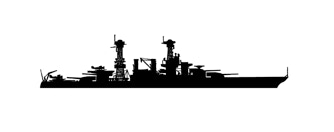
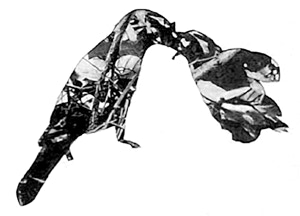
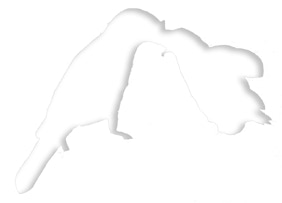
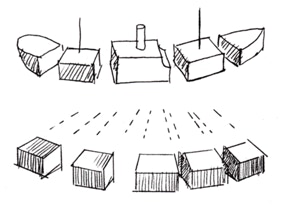
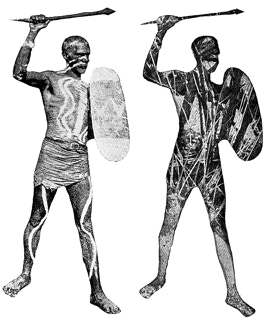






ILLUSTRATION CAPTIONS
Fig. 01: My own diagram at the top, first published in Art and Camouflage (1981), was an attempt to demonstrate that random dazzle camouflage schemes could be easily produced by overlaying an embedded figure diagram onto the profile of a ship. The other three are my reconstructions (originated by US camoufleur Everett L. Warner) of cut-out silhouettes of ships, overlayed on printed text, to show that larger-sized shapes (letters) are more effective for disruption than are smaller ones.
Fig. 02: In 1918, Warner (as shown by his drawing) discovered a new method of devising distortion patterns by cutting up wooden ship models, then variously rearranging them.
Fig. 03: Somewhat like Warner, I covered wooden blocks with black-and-white disruptive shapes, arranged them arbitrarily, then viewed them through a cut-out ship silhouette.
Fig. 04: In my experiments, I was in part indebted to artist and naturalist Abbott H. Thayer (whom Warner also knew about), who recommended that any individual could design his/her own field camouflage by looking at their surroundings through a cut-out of their figure.
Fig. 05: In a series of two-stage educational set-ups, Thayer showed how animal camouflage could be replicated by the same use of overlays and silhouettes.
Fig. 06: Thayer’s notebooks have many examples of the use of silhouettes in simulating camouflage.
Figs. 07 and 08: In these two sets of examples, titled “Styles of Art as Styles of Camouflage,” I placed cut-out silhouettes of ships on top of details from famous paintings from the past.
Figs. 09 and 10: In these examples, titled “Quasi-Camouflage: Hypothetical Dazzle Designs,” I used the same silhouette-based procedure, but the cropped images on the lower layer are details of public domain photographs, obtained online.
Disruptive camouflage is sometimes called “high difference” camouflage. It functions to break up the figure, regardless of what its surrounding may be. The likelihood increases then that it will be seen not as a single continuous thing, but a hodgepodge of incompatible parts. During World War I, when this was adopted for ship camouflage, dazzle-painting was variously called baffle painting, razzle dazzle, jazz painting, parti-coloring, zébrage, and crazy quilt patterns. Since thousands of ships were in need of camouflage, it was a challenge to meet the demand. Below are images that show how silhouettes might have been used to expedite production of one-of-a-kind disruption schemes.

Enlarged view of one of the hypothetical plans from Fig. 10 below
Click on image to enlarge




“[In World War I ship camouflage] Each nation seemed to have a characteristic type of camouflage and after a little practice you could usually spot a ship’s nationality by her style of camouflage long before you could make out her design.”
National Marine Magazine
March 1919
